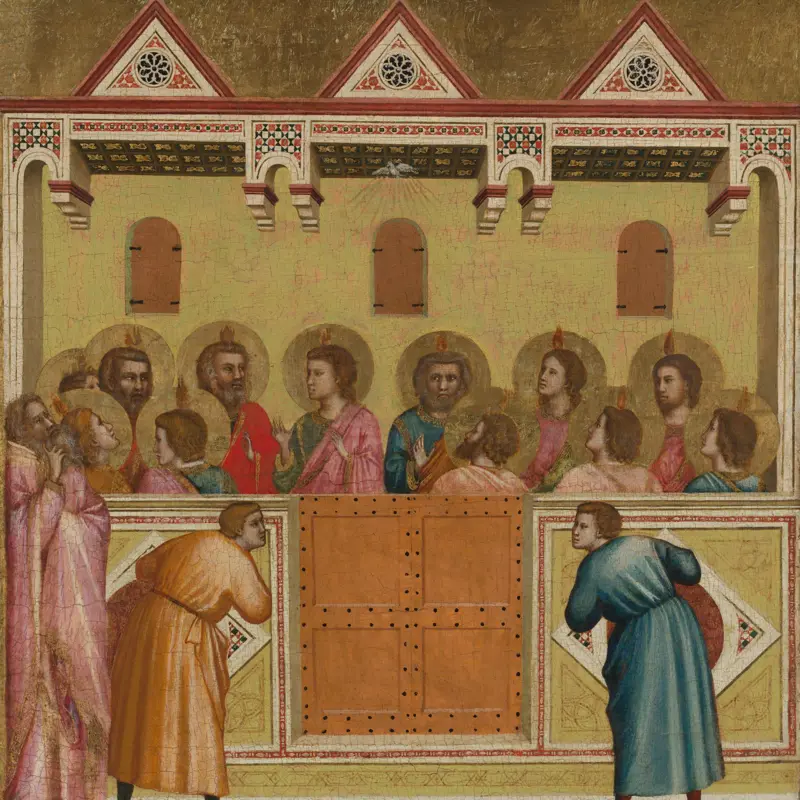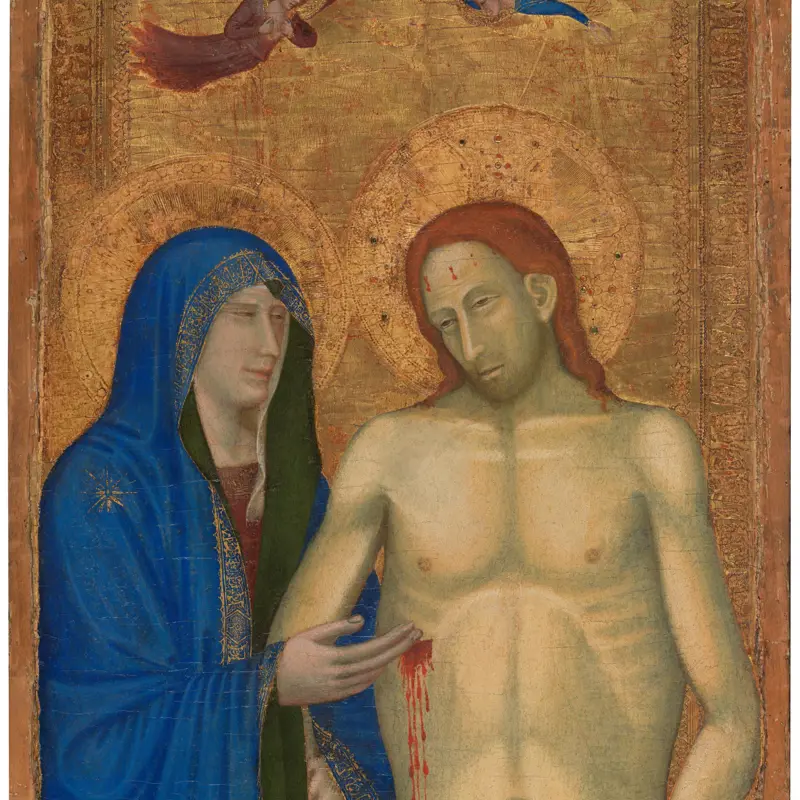Giotto was the chief liberator of Italian painting from the Byzantine style of the early Middle Ages. He was mainly active in Florence, although he may have been trained in Rome. He also worked in Avignon, Padua and Naples (1328-32).
The part he played in initiating a new phase in Italian painting was recognised by Dante his contemporary, and later underlined by Vasari. Giotto's main surviving fresco cycles are those in the Arena Chapel, Padua, which probably date from just before 1305, and those in the Bardi and Peruzzi chapels in Santa Croce, Florence, probably before 1328.
His few undisputed panel paintings include the 'Ognissanti Madonna' (Florence, Uffizi). Concentration and gravity are the hallmarks of Giotto's style, and his figures, notable for their expressive character and three-dimensional weightiness, inhabit convincing architectural spaces.
Giotto
about 1267 or 1276; died 1337


